The College Coach’s View on the Recruiting Process


We’ve heard from numerous athletes in the classes of 2024 and 2025 about their recruiting experiences, and now it’s time to flip the script and hear from the coaches and their perspective on the recruiting process. Six coaches from a cross section of university golf programs kindly answered a variety of questions that cover the ins and outs of finding the right athletes to take their team to a new level. From first year head coaches to seasoned leaders, they provide some insight into the complicated world of college recruiting.
Obviously, talent and scores are the first things that catch a coach’s eye when they are researching future team members. Further than that, what attributes are coaches looking for that sets an athlete apart from the pack? Enjoyment of, love and passion for the game made the list for Auburn’s Nick Clinard, TCU’s Bill Alcorn, and High Point’s Todd Eckstein. College golf is like a full-time job, with students spending countless hours on the practice facilities and on the course, trying to balance it with their studies. If an athlete doesn’t have the passion and drive for the game, the balancing act might prove difficult. James Madison’s Carter Cheves looks for an athlete with an ‘obsession with improvement,’ which is a fantastic quality to have, along with positivity. Eckstein relates the qualities he is looking for to the team’s core values, which are ‘Joy, Excellence, Together (JET)’. He searches for an infectious positive attitude in his players. Skill-wise, Eckstein looks for enough distance, distance control, and confidence in simple short game shots, all of which help translate to the college game. John Manos, head coach of division III Drew University, says ‘If I have to pick five attributes that I look for in a recruit, I would say determined, goal-oriented, honest, disciplined and committed. With all of that being said, there are dozens of attributes a recruit can display that are attractive to a coach and I don’t want to narrow our recruiting pool down to players that fit into a certain box.’ Clinard states that he is looking for character and maturity, and University of Kentucky’s Gator Todd takes that a step further by evaluating things other just a golfer’s game on the course, stating ‘We are looking at everything. Obviously, there are physical and mental attributes that we’re looking for but we’re also looking for things like how they’re handling adversity, how they’re interacting with their playing competitors, how they’re treating they’re parents, how they treat a scorer or a volunteer. It all matters in our eyes.’


Coaches start evaluating future players early on, and we asked coaches how early they start researching young prospects. First-year TCU head coach Allcorn shares ‘We have a good idea of what the local younger players (10-14 years old) are doing. By the time most local kids are entering high school we’ve at least seen them play.’ When asked what is important to him at that age, he notes several key points: ‘ 1. Do they look like golfers or are they lost? 2. Are they fighters? That doesn’t go away. 3. Does it look like they do one thing better than most players their age?’ We asked how many players might be on Allcorn’s list a year before the contact date of June
15th after sophomore year. His coaching team starts with a long list prospects a year out, about 25, and that list may be whittled down to 10-15 by June 15th, after extensive research and watching them on the course. The number of athletes that end up on visits to TCU varies on the roster needs for that particular class. JMU’s Cheves starts with an extensive list of 50-75 players a year before contact is allowable, then whittles it down to 30-40 going into June 15th. At a young age, Clinard is looking for the same attributes that he wants to see in an older player: character, work ethic, passion for the game, maturity. He adds, ‘Having high passion and a strong work ethic can be very attractive to college coaches.’ First-year Kentucky head coach Todd starts watching players in 9th or 10th grade, focusing on those who best fit the Kentucky team culture. By June 15th, his staff keeps 8-10 players on their list, and that list will decrease to 3-5 players as the summer progresses towards August 1st, when athletes are allowed to take official visits. High Point’s Eckstein has a similar list of 10-12 athletes on June 15th but may start his list a bit later. ‘Winter of sophomore year is a good time to familiarize myself with names and resumes of the current sophomore class. I try to hold back on making any judgments about a younger prospect until I have the chance to get to know them starting on that June 15 date.’ Eckstein doesn’t limit himself to those players, as he notes that half of the players on his team were not even in contact with him on that date. That serves as a good lesson for athletes that may be disappointed by a lack of communication on that day, as there is plenty of time to get to know a coach as the recruiting process evolves. Drew’s Manos has a different approach and timeline, coming from a smaller, division III school. He shares ‘I won’t start researching recruits until their junior year. I don’t look at 14 or 15 year old golfers because nobody at that age wants to consider a small, division III option at that point. Once they realize that Alabama or Texas isn’t going to be calling them is when I want to be the one calling them. Players’ names get added to our list all the way until the winter of their junior year. I’m not naïve to the fact that kids don’t grow up dreaming of attending Drew University and I really have to show them all of the benefits that a small school like Drew will provide them.’ We took the division III topic a step further and asked Manos about the scholarship situation, as division III does not offer athletic scholarships. He states ‘There are academic scholarships available to all of our players and these are awarded based on their grades in high school. The better the student you are, the more scholarship money you can expect to receive. Since we can’t offer golfers an athletic scholarship, we really need to sell them on all the benefits Drew offers. We are in one of the best locations in the country. We are thirty minutes from New York City but at the same time we are in a suburban setting. We get the best of both worlds with the biggest city in the world close by but can also relax on our beautiful campus.’
1/3 CGC Staff




Before coaches start researching players, their email inboxes are inundated with communication from prospective players. We asked the coaches what sets apart certain emails from the others, and when they recommend that athletes begin communication. It is important to several coaches that emails are specific to their school and not a general email. Allcorn offers good advice, stating ‘Probably freshmen year of school is a good place to start for those players who know they will play college golf. Be brief. Be accurate (Give me all tournament scores, not just the good ones. We’ll find out the bad ones.) Be specific to the school and coach you are emailing.’ Manos agrees that coaches can easily spot a ‘mass email’, ‘It is clear when a recruit is sending a mass email out to dozens of coaches and we were just on a list. To set yourself apart, just a few personalized items go a long way. A very simple one is when you address the email to Coach Manos rather than just Coach. Stating why you think Drew would be a good fit and asking a few specific questions is a great start and an email I will definitely get back to. I would recommend reaching out to a coach as soon as you know you’re interested.’ If a player is genuinely interested in Auburn, Clinard recommends starting in 9th grade with follow up communication often, saying ‘Most kids contact coaches around 9th grade and sending a resume, academic info, references, tournament schedule, etc. is helpful. Players sending information via email once a month or so is a good idea, as it helps coaches know they are interested in their programs.’ Cheves agrees that early communication is helpful, adding ‘I would recommend players reach out to coaches as early as possible. You want coaches to recognize your name. Players need to always include their graduation year on all correspondence. Have a clear, concise message. Coaches don’t need a lot of fluff.’ Kentucky’s Todd and his staff also look for simplicity, noting ‘Keeping it simple and authentic is what we are looking for. It does not need to be some long-drawn-out email, just your name, a brief bio, and what tournaments you are playing in the future.’ Ultimately, an athlete’s scores and ability to build a relationship on the phone and in person is what matters the most to Eckstein, but emailing him beginning in the spring of sophomore year is an important step to building that relationship.
When looking at college rosters, one can find a mix of American and international players on some, solely American players on others, and the occasional team with heavy international representation. We asked our panel of coaches how they go about finding international players other than on WAGR, and if academics can complicate the recruiting process. Allcorn and Todd typically do not explore international recruiting, with Todd saying ‘We do not typically recruit internationally. I feel like it is hard to figure out the academic side of international athletes. That does not mean we will not ever go that route, it’s just not the first place we look.’ Clinard does a bit of research on players using various websites, and has had a handful of international players on Auburn rosters in the past ten years. Both Drew’s Manos and High Point’s Eckstein enjoy using recruiting services to discover international talent. ‘I have 1-2 international recruiting agents that I trust, and they are great at vetting players for the right fit on the golf, social and academic pieces. If those student athletes have worked hard in school and have good English skills, I've had no issues with their admissibility to High Point,’ he states. Manos concurs, ‘There are several recruiting services out there that do a fantastic job of compiling profiles of international golfers. This allows me to see all of their personal information, academic background, and of course golf resume and swing. International students are slightly more complex from an admissions standpoint but generally speaking it’s not too much more difficult.’ Half of James Madison’s current roster is represented by international athletes, and Cheves explains his method of recruiting them, ‘We recruit heavily international. We look at the European Golf Rankings and major events in each country and will travel to Europe most summers to evaluate players firsthand. Former players of ours provide good insight into where to look. Our university has a great international program, and we haven’t experienced any trouble with academic requirements. The main one that can potentially cause issues is anyone coming from a non-English speaking country. They must provide a fairly high English proficiency for admission to the University.’


We were curious how much player independence with their game plays into recruiting an athlete, and coaches were in agreement that independence is important, but a player should be able to work with the coaches and learn from the team to improve. Eckstein states it best, ‘There's a balance between independence and coachability that has to be struck working with players. I love when players know how to problem solve and make their own decisions in competition. I also love when players come asking for input and advice when they want to learn in grow. Those two qualities can co-exist and those are the players I enjoy coaching most.’ Coach Clinard agrees, ‘Game independence can be helpful for many reasons, but it’s also nice to have players that take lessons and have a team around them to help them progress in the game. Players and coaches are always learning so having a plan to be successful is vital.’ Coach Allcorn adds, ‘If they are independent and are competent, that’s one thing. If they are independent and don’t know what they are doing or how to get better, that’s another. Everyone needs some guidance on how to become better. I do like it when I see junior golfers who are independent in life. They transition to college much more easily.’ Life independence is an important attribute, and that can easily be seen on a golf course in an athlete who goes through their practice routine and round without a parent’s help. Manos goes a step further and discusses the need for constant instruction from a swing coach, ‘Independence is definitely important. A player who needs their swing coach with them 24/7 is not conducive to college golf. We play a schedule that moves at a rapid pace and there isn’t a ton of time during the season for breaks. Technology is a great thing though and we can easily send swing videos back to swing coaches.’

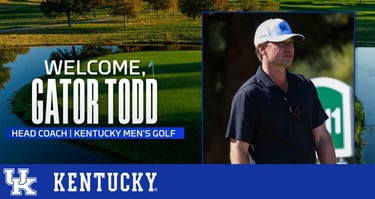

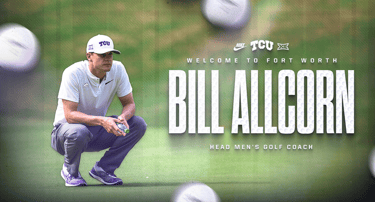
Both TCU head coach Bill Allcorn and Kentucky head coach Gator Todd were successful assistants at programs that were heading to the NCAA Championship in May when they were tabbed as the leaders of their current programs. It was hectic finishing up the season at the NCAAs, hiring assistants, and likely changing some of their target recruit lists withing a short period of time. Both shared their experience with the quick transition, with Allcorn saying ‘It was insanely quick. When I got back from Grayhawk at Nationals with Oklahoma, I immediately began recruiting for TCU. We did not have a 2024 commitment so we needed to fill two classes (24 and 25) and decide on transfers in about 6 weeks. Coach Buck (TCU assistant) and I were extremely busy and had a ton of players visit campus to see who would best fit our program. We feel like we are caught up and in a good spot moving forward.’ Currently they have four solid 2024 signees and some stellar verbal commitments for 2025. Coach Todd also described the transition as hectic, noting ‘It was always going to take something special for me to leave Vandy. The Kentucky job opened on a Tuesday, and I got the job ten days later, so it happened fast. It was a no brainer for me, as I have always thought the ceiling was extremely high here. I have played and coached in the SEC so becoming a head coach in this conference was something I always dreamed of. When I got hired, we still had 3 weeks left in our season at Vandy and I feel like my mind was in two different places. I wish I could’ve been more present with Vandy those last few weeks; we had such an amazing group of guys. Even though my family was just moving a couple of hours up the road, life was a lot more hectic than we could have imagined, especially with a newborn! Being able to hire Chip McDaniel right away made my transition into UK easier than I deserved. He was a phenomenal player at UK and was in his first-year coaching at Eastern Kentucky. We were still recruiting for 2024 and he already had a good feel for the class. Bringing in Jacob Cook a month later made things even smoother, as he is a high character guy and has been an awesome addition to our program as well.’ Like TCU, his staff was able to notch some solid recruits for both the 2024 and 2025 classes.
Both coaches were able to secure strong commitments in a short period of time. We asked if they thought that being a new head coach at a program was a positive factor for most recruits, or if some were a bit apprehensive with a school in transition. Coach Allcorn couldn’t speak to the individual recruits’ thoughts, but noted that as a whole, he got positive responses from the athletes he and his staff recruited. Coach Todd found a general excitement about the program, especially since his 2024 recruits are two of Kentucky’s top players. He says ‘I think bringing in a new coaching staff has created some excitement within the state and the southeast region. Kentucky is a big brand and recruits itself. We are starting to create some interest from players that might not have originally considered coming here.’
In conclusion, we asked each coach to give future players who are just entering the recruiting phase their best piece of advice regarding the recruiting process. We appreciate their answers and the time they took to be part of this article.
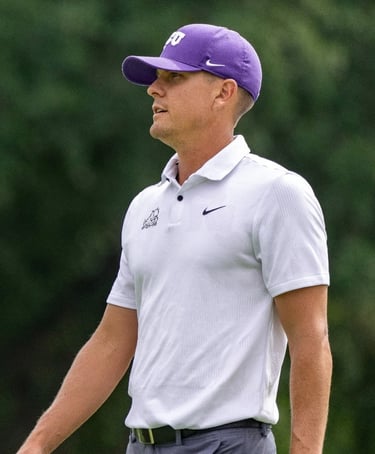

Coach Allcorn: Reach out to the schools where you want to play but be realistic with your ability. College golf is the best sport on campus, but it’s not any fun if you are sitting at home when your teammates are traveling across the US. You want to be at a place where you can play.
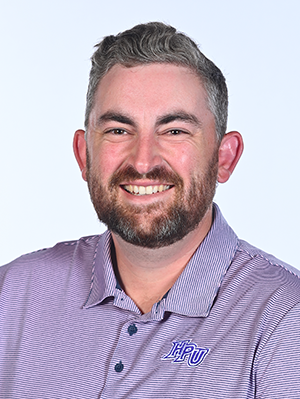

Coach Eckstein: My best advice is to be honest with what things matter to you about where you choose to play golf in college and what things won't matter. Once you've done that, share that with the coaches who are recruiting you. That is what will help you find your best fit and make for an enjoyable four years.
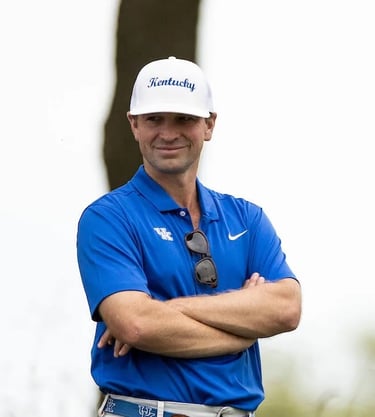

Coach Todd: Figure out what you are looking for, do your due diligence on the coaches and the program. Do not send the same email to thirty different coaches, we see right through that. I would encourage a player to watch a college golf tournament, see how the players are handling themselves, how they’re interacting with their coaches and parents. That will teach you a lot!
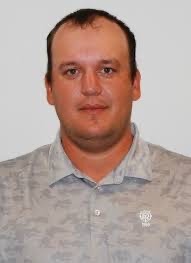

Coach Manos: The best piece of advice I can give a recruit is not close any doors. There are so many amazing schools out there and amazing golf programs. If recruits take the time to research them and get the whole picture, you can find somewhere that will change your life.
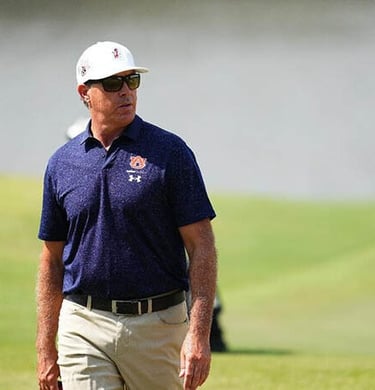

Coach Clinard: Be the best version of you on a daily basis, work hard/smart and enjoy the process. Recruiting can be overwhelming at times, but if players focus on their games and a growth mindset then positive things will happen.
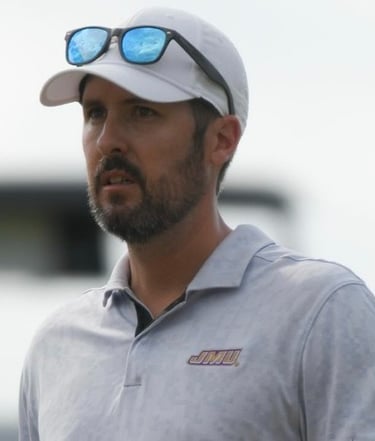

Coach Cheves: I would tell guys to explore all opportunities. Be open-minded about every school or opportunity that presents itself to you. The most important thing is going somewhere you can travel and develop.

